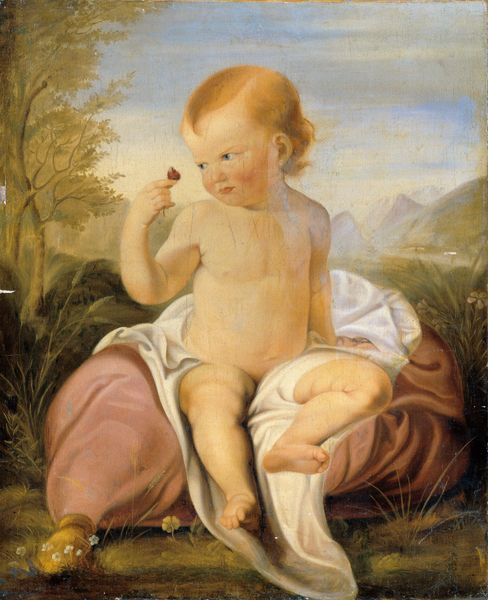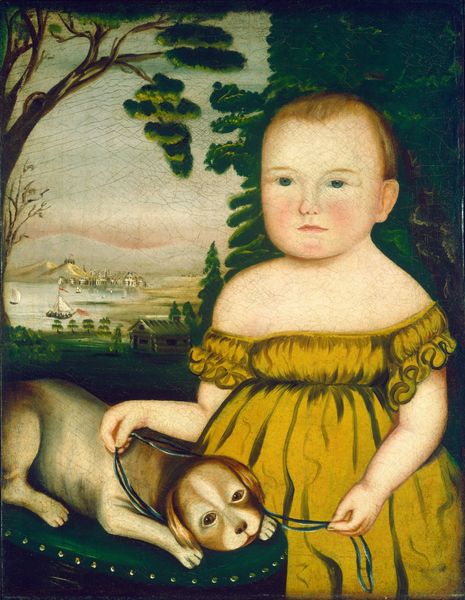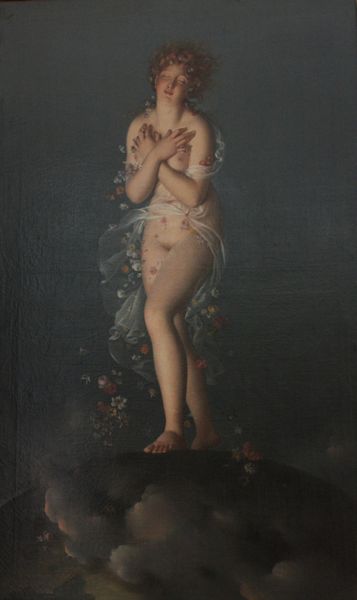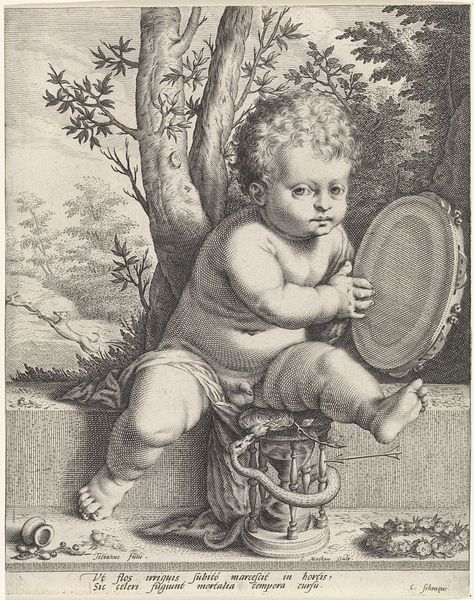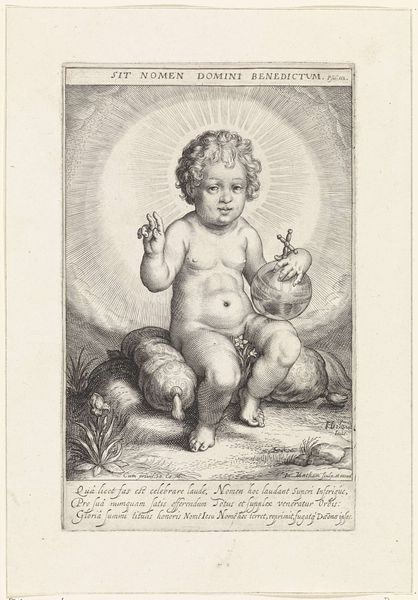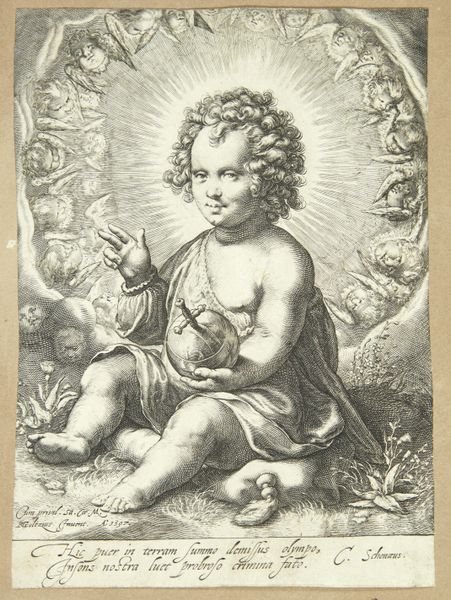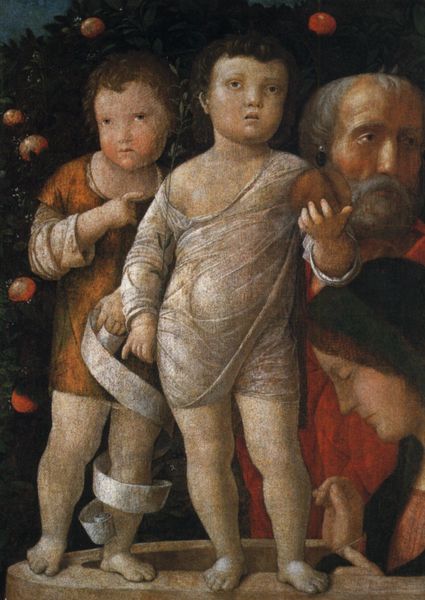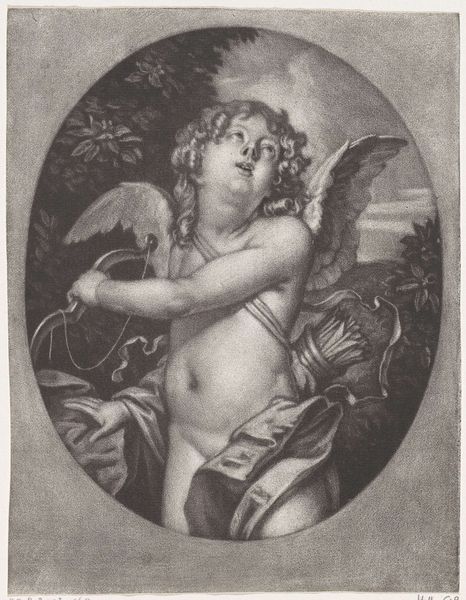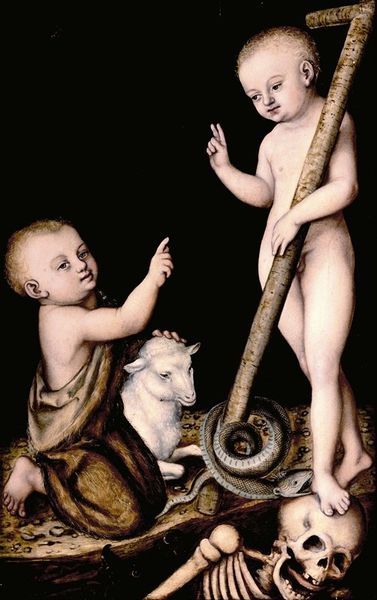
oil-paint
#
portrait
#
oil-paint
#
figuration
#
oil painting
#
child
#
underpainting
#
history-painting
#
italian-renaissance
#
nude
#
portrait art
Copyright: Public domain
Curator: Looking at this piece, I’m struck by how Luini employed oil paint. Its layering, the build-up and glazing— it allows us to witness the labor, the very act of construction of the "Jesus as a Child." It whispers of underpainting and material choices rooted in the traditions of Italian Renaissance workshops. Editor: My goodness, what a chubby, serious child. It feels rather strange and intense to see him in such a solemn state. Perched precariously on an apple no less! It’s quite captivating, and makes me wonder if all childhood was seen this way in art back then, full of latent meaning. Curator: Well, let's unpack some of that meaning. We need to look beyond immediate impressions. Notice that even the seemingly idyllic, such as the soft flesh tones and playful composition, speak to broader social structures: access to resources like quality pigments. Luini worked within a clear economic framework and this is evident even down to the dimensions of his canvas. Editor: That may be true, but there’s also this peculiar contrast—the cross juxtaposed against the child’s nakedness and vulnerability creates such a powerful push and pull. His foot firmly planted on the symbolic apple… Is this little fellow wrestling with destiny, or simply showing off a recently learned skill in balance? Curator: This isn't simply happenstance, right? It serves as an explicit acknowledgement to a theological framework that positioned humans against the temptations of sin. But as to the physical dimensions – are those of canvas and use of costly oil paint due entirely to the painter’s means? Were commissions of the era really so different from how celebrity portraiture gets made today? We want to delve into this further and contextualize Luini as an artist within a broader historical system of patronage. Editor: Hmmm, food for thought! All of this reminds us that no artwork exists within a bubble. I am thinking of it as more than some Renaissance era artifact--Luini makes sure of this. But rather as still living on into today… a portal. Curator: Exactly. And by thinking of these works less as relics and more as intersections, we uncover some fresh and engaging art experiences today!
Comments
No comments
Be the first to comment and join the conversation on the ultimate creative platform.

